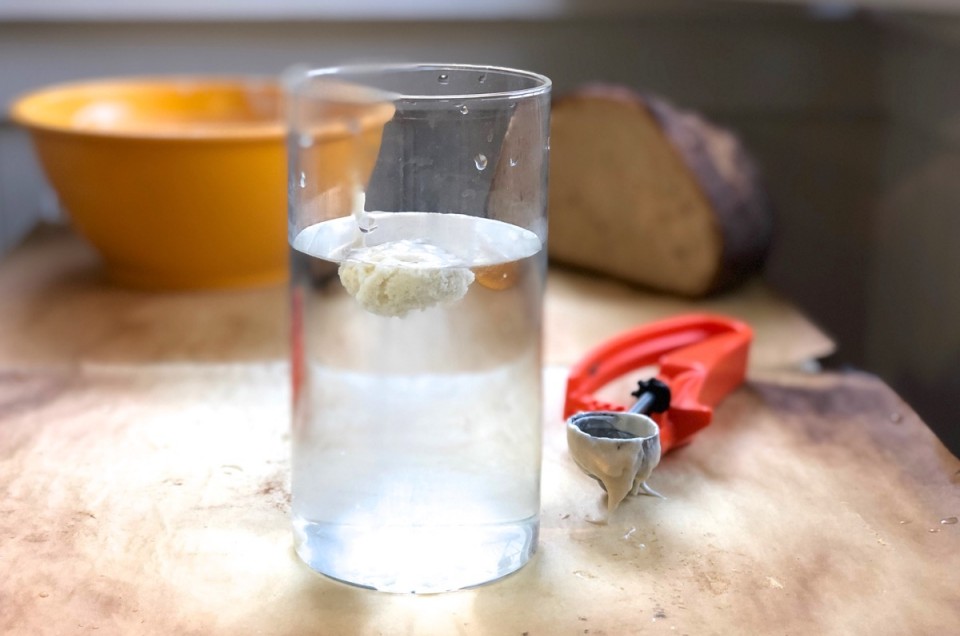


How do you know when your yeast dough has fully risen? And what about sourdough starter? You feed it and it grows and bubbles for hours, but when is it actually at its baking peak? Many claim dropping a bit of dough or starter into water to see if it floats answers both these questions. But we weren’t convinced — so we did our own float test to find out.
Here’s the deal. As the yeast in dough or starter works, it produces tiny bubbles of carbon dioxide. This CO₂, trapped within the glutenous web formed by flour and liquid, makes dough or starter (or an overnight preferment) rise, lightening its consistency in the process.
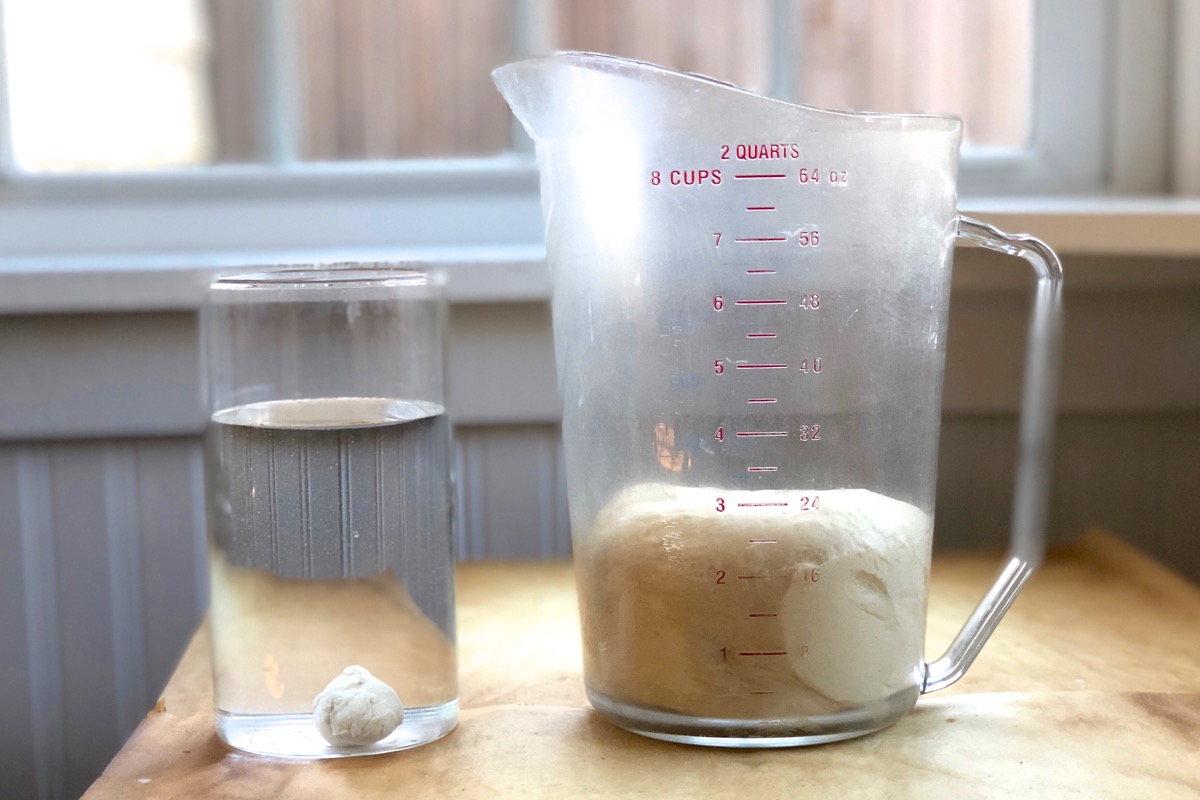
Yeast dough that’s just begun to rise sinks like the proverbial stone when dropped into water.
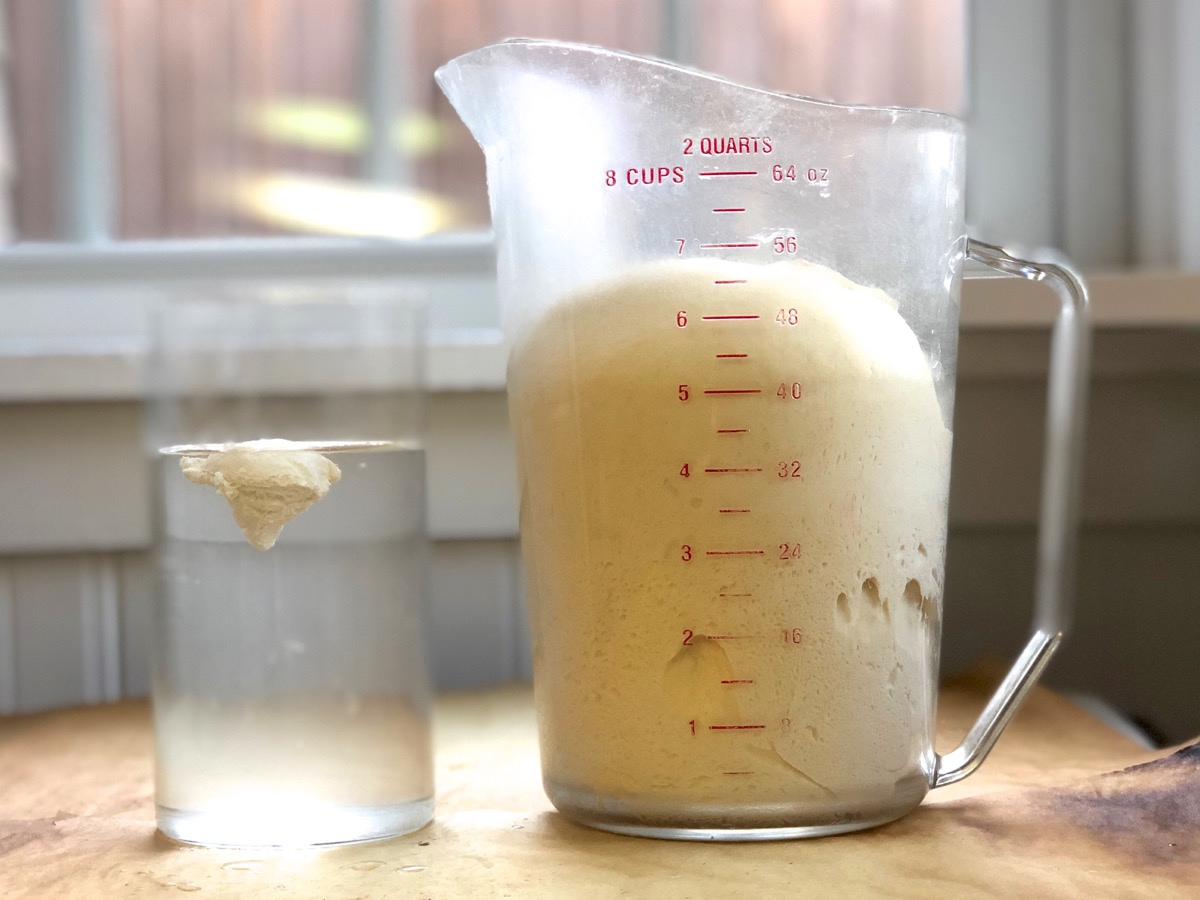
But the longer it rises, the more gas is trapped until eventually the dough becomes lighter than water and floats.
So far so good. Yes, fully risen dough will float when placed in water.
But this test doesn’t go far enough. What about dough that’s not at its peak? Will it remain submerged in water, or pop to the top?
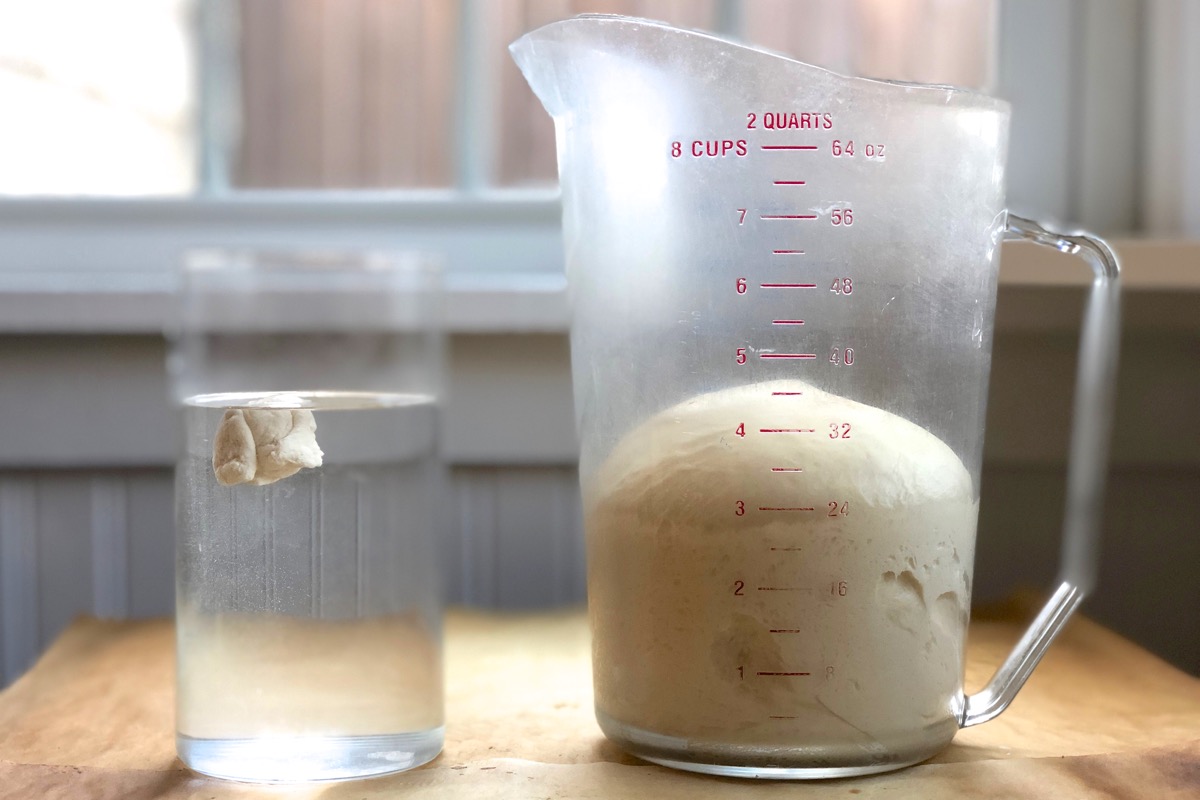
POP!
This is called a false positive: the test result points one way, but the reality is actually something quite different.
I'm using my favorite pain de mie dough for these tests. The recipe calls for the dough to rise for 60 to 90 minutes, until it's nice and puffy.
The dough above has risen for 30 minutes and is just beginning to climb the sides of the measuring cup. Clearly, it isn't anywhere near "nice and puffy." Yet when I place a small scoopful in water, it rises right to the top and stays there.
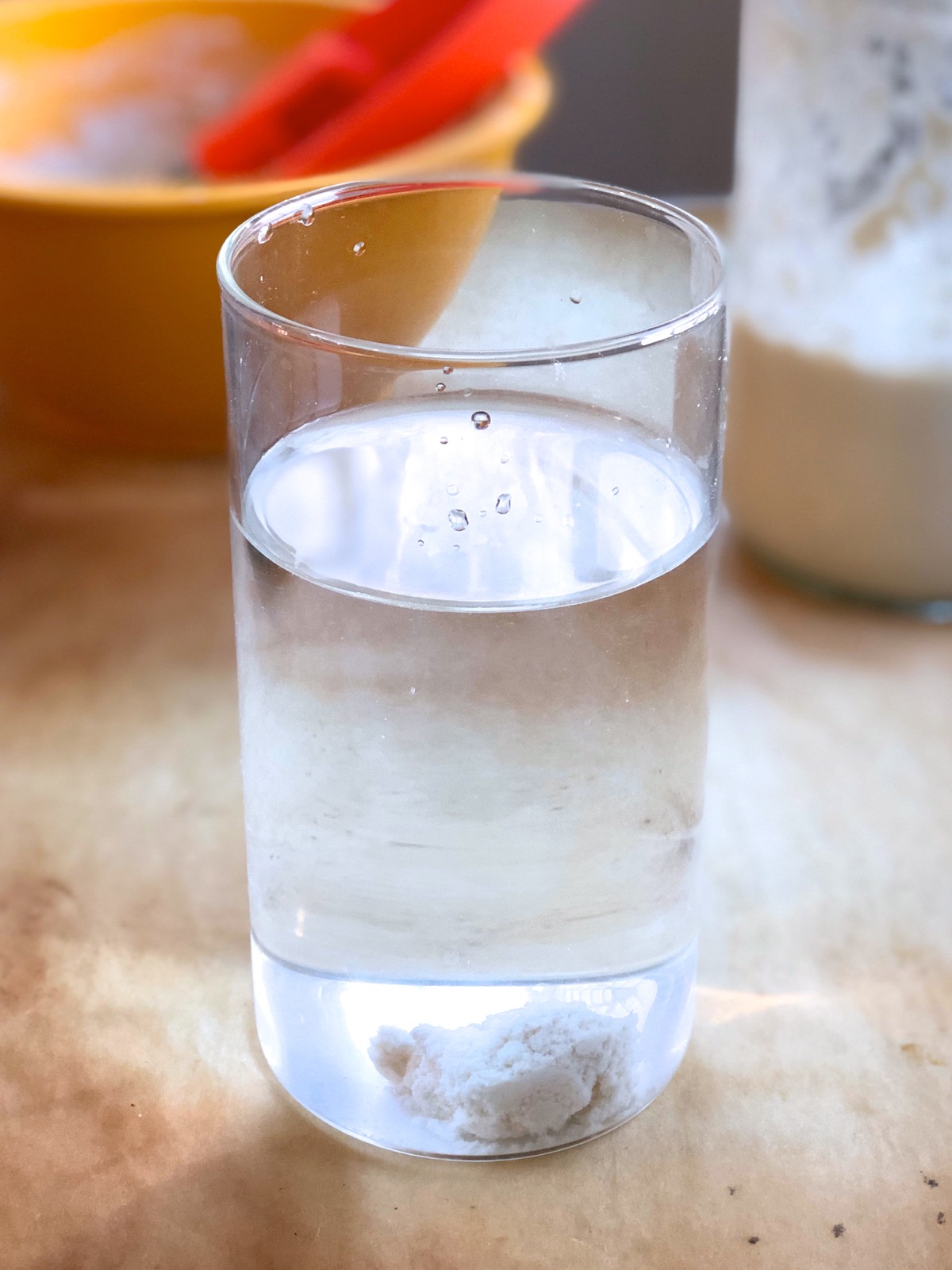
After being refrigerated without feeding for several weeks, my sourdough starter is clearly in need of attention. So I feed it and drop a bit in some water. As expected, it sinks.
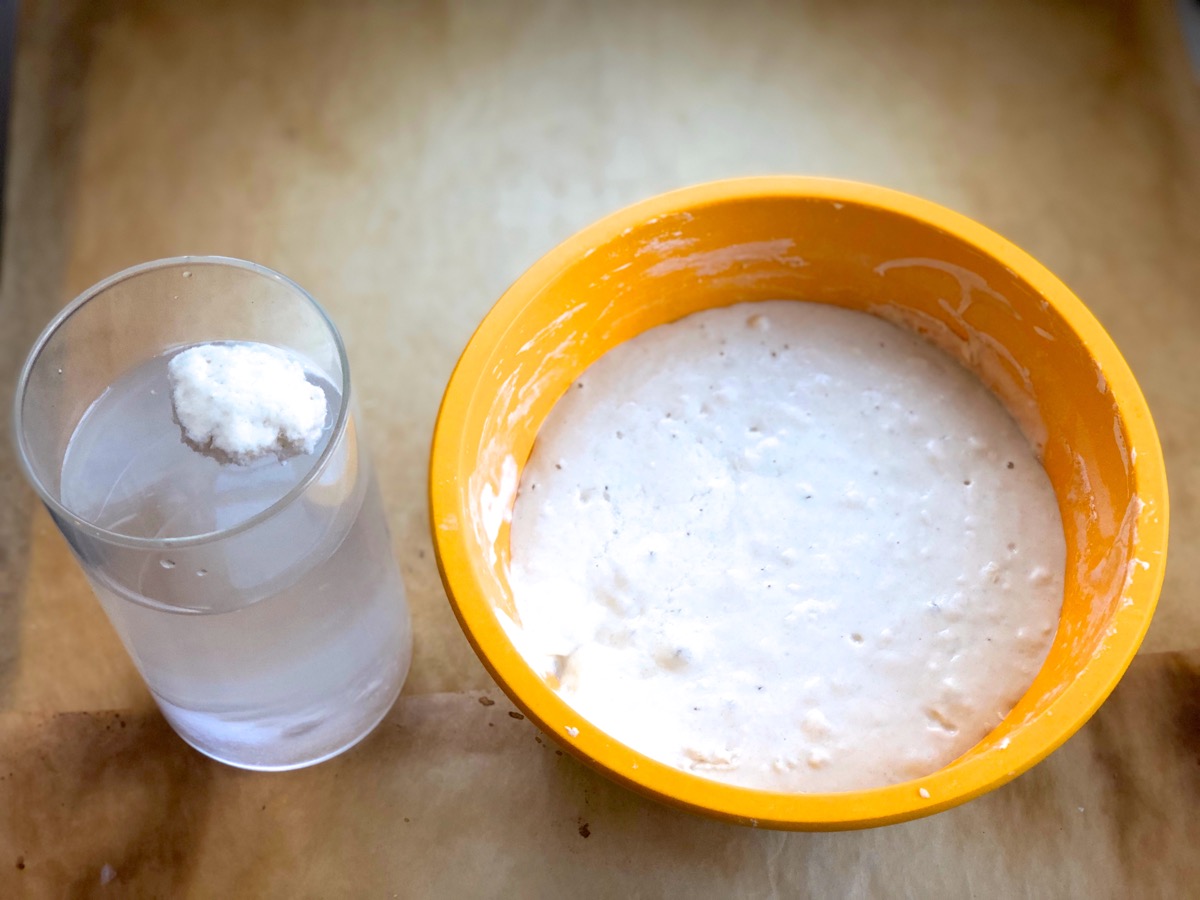
Here's the starter 4 hours later. Note how the bowl of fed starter shows only a few small bubbles; I'd estimate it has at least 2 to 4 hours to go before it'll be suitable for baking. Yet the starter dropped into water rises right to the top.
So is the float test a good way to assess the rise of yeast dough or baking readiness of sourdough starter?
No.
Both partially risen yeast dough and growing (but not yet ripe) starter will float in water.
If rising yeast dough or fed sourdough starter sinks in water, it’s definitely not ready to continue to the next step in your recipe.
But just because either floats doesn't necessarily mean they're good to go.
Best way to tell if your dough is fully risen? Poke it with your index finger. If the indentation remains, it's ready to go. If the dough rebounds and your finger mark disappears, it needs more time.
What are the signs of a perfectly ripe starter? It's very bubbly, and is reliably doubling in size within 6 to 8 hours of feeding.
Want to learn more about rising yeast dough? Read our blog post, The bread also rises. For more information about starter, see our sourdough baking guide.

